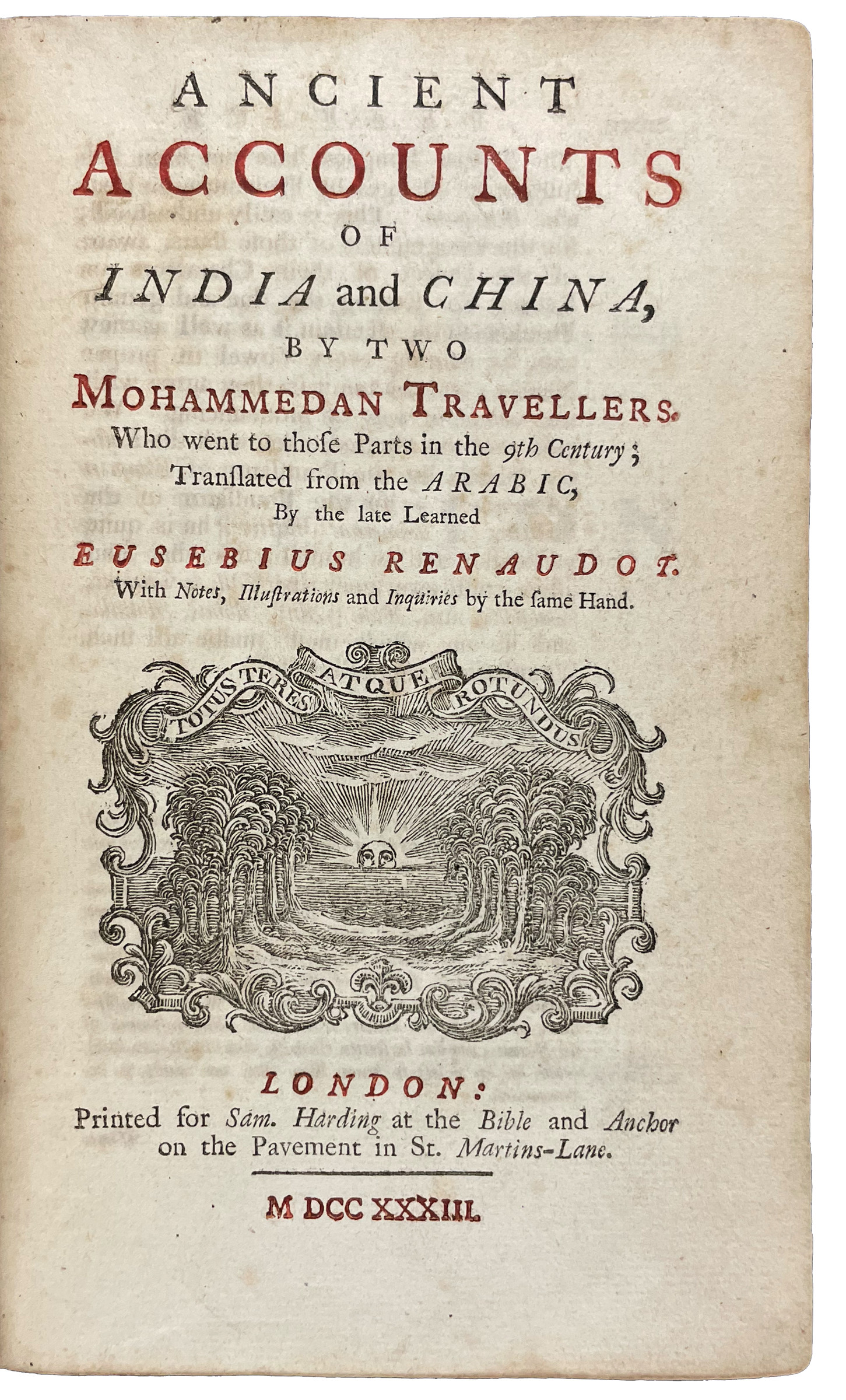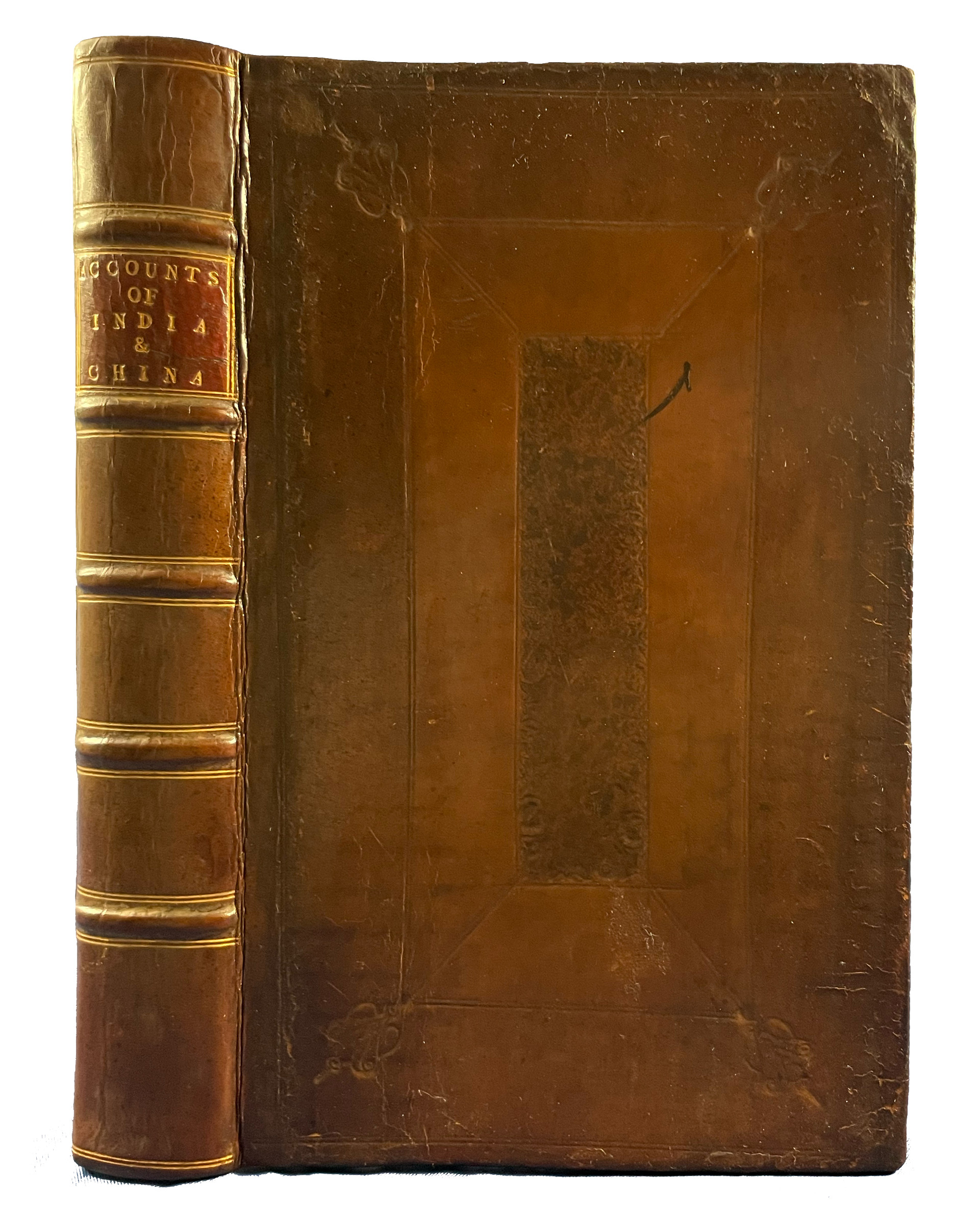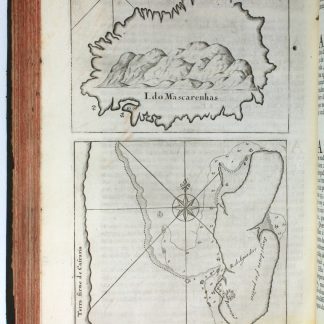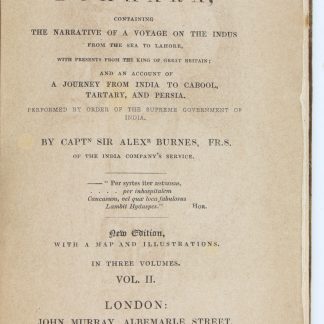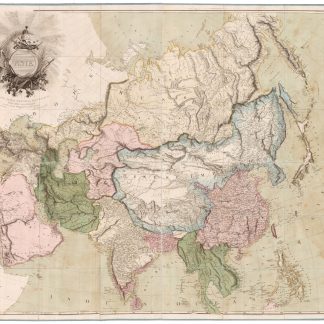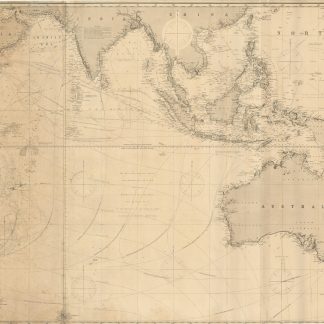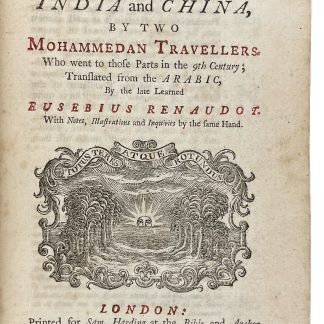Arabic travel account from the early Abbasid era, concerning China and India: rare English edition
[Silsilat al-tawarik - English]. Ancient Accounts of India and China, by Two Mohammedan Travellers, Who Went to Those Parts in the 9th Century.
8vo (ca. 12 x 20 cm). XXXVII, (1), 260, VII pp. With wood-engraved printer's device; half title and title-page printed in red and black. Contemporary panelled calf, raised bands into 6 compartments, red morocco lettering piece, gilt title.
€ 28,000.00
First English edition of the famous travel report given by the Arab merchant Suleiman al-Tajir, who had visited China and India in the 9th century. His book is the oldest Arabic account of China, written more than 400 years before Marco Polo. This is augmented by the "Silsilat al-Tawarikh" of Abu Zayd al-Hasan al-Shirafi, written in the early 10th century and based on the account of Ibn Wahb al-Basri, who had visited China shortly after Suleiman.
Translated from the French version by Renaudot. According to Renaudot, the account of events such as the great revolution which swept across China during their second voyage confirms that the journeys were undertaken four centuries prior to Marco Polo. Their travels took place in 851 AD and 877 AD, respectively. The text gives a lively account of life in China and India, with "the first foreign descriptions of tea and porcelain, and a whole panorama of Chinese society, from the Son of Heaven and Confucian ethics down to toilet paper and bamboo urinals" (Mackintosh-Smith). Later Arabic geographers such as Ibn Khordadhbe and al-Mas’udi relied heavily on this work for their information on India and China. "Ces relations sont de la plus haute importance pour la connaissance de l'Inde et de la Chine au moyen-age" (NBG).
The book includes stories about the Indian Ocean and its fish species, the cities around the Arabian Gulf, whales and other large man eating fish, the religions of China and India. Other sections discuss commercial routes and the most important products of India, Srinadeb, Java, and China, as well as the presence of Muslims in China in the third and fourth centuries.
Cox I, 335. Lust 297. Cordier, Sinica 1924. NBG 41, 997f. (s. v. Renaudot). T. Mackintosh-Smith & J. Montgomery (eds.), Two Arabic Travel Books (2014).

